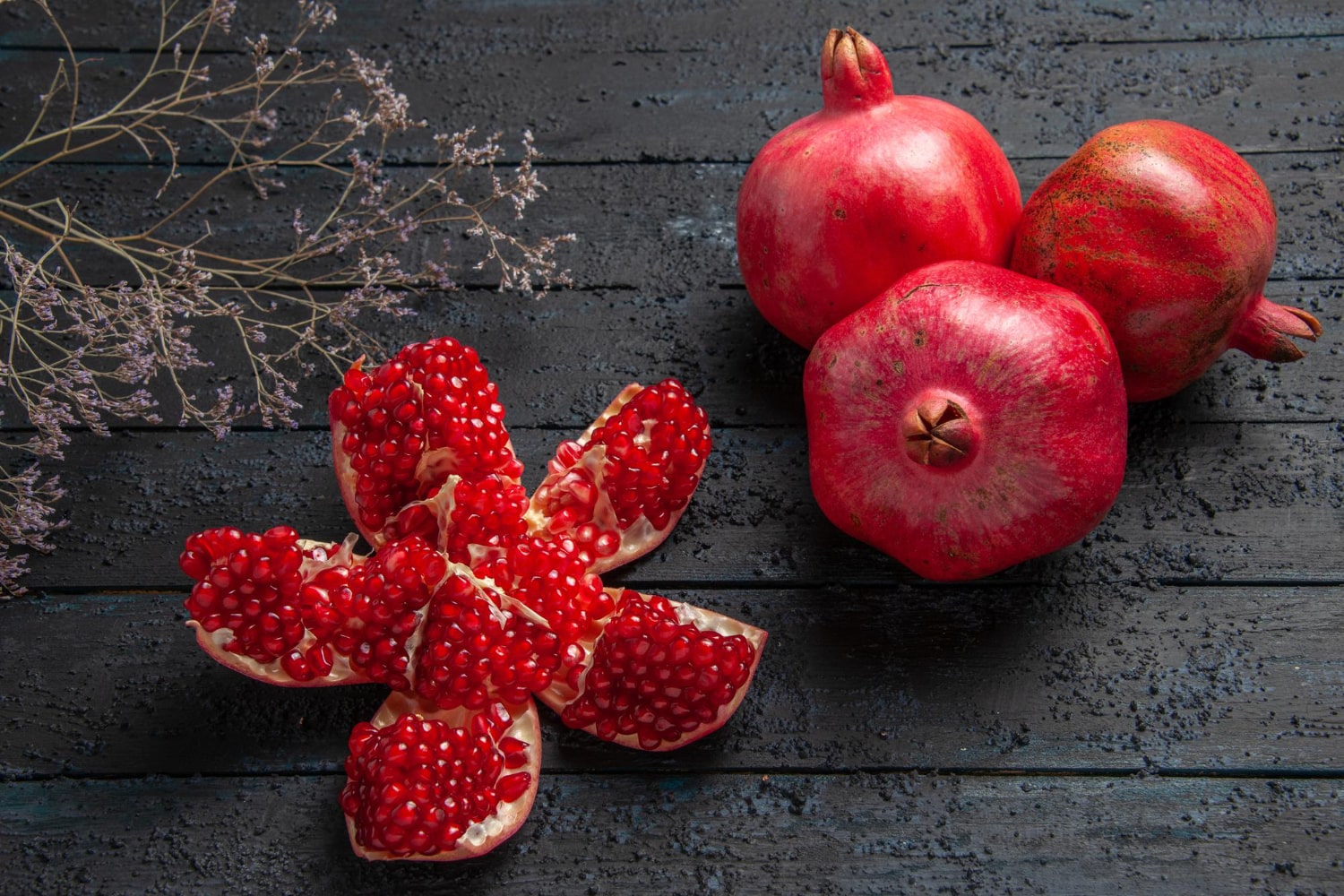Pomegranates have long been considered a symbol of life, fertility and beauty. Their bright red skin and hundreds of juicy seeds hide a real treasure of vitamins and minerals. This fruit has been known to mankind for thousands of years, mentioned in ancient myths, legends and even in sacred books. In different cultures, the pomegranate symbolized love, immortality or power and still remains one of the most valuable fruits in the world. Here you will discover interesting facts, incredible facts and fascinating facts about pomegranates that you may not have known.
- The pomegranate is one of the oldest cultivated fruits, grown more than 4000 years ago in Mesopotamia and Ancient Egypt. Archaeologists have found its seeds in the tombs of pharaohs, as it was believed to provide new life in the afterlife. In many religious rituals the pomegranate symbolized rebirth and eternity.
- In Greek mythology the pomegranate is associated with the goddess Persephone. According to legend she ate pomegranate seeds in the underworld and was forced to return there every year. That is why the pomegranate became a symbol of the cycle of life and death as well as the change of seasons.
- The name pomegranate comes from the Latin word granatus meaning grainy. This directly refers to its structure, as inside there are hundreds of small seeds surrounded by juicy pulp. On average a single pomegranate contains from 400 to 700 seeds.
- In many countries the pomegranate is regarded as a symbol of love and marriage. In Armenia it is still given to newlyweds as a talisman of happiness and a symbol of a large family. In Iran and Turkey during wedding ceremonies people break a pomegranate believing that the number of seeds foretells the number of future children.
- In the Middle Ages the pomegranate was seen as a symbol of royal power and wealth. Its image often decorated coats of arms, crowns and jewelry. The many seeds held together in one fruit were taken to represent unity and strength.
- In Spain there is a city named Granada, whose name comes directly from the pomegranate. Its image appears on the city’s coat of arms and serves as a cultural emblem. Interestingly, the English word grenade also comes from the fruit because of the similarity in shape.
- Pomegranates are rich in antioxidants that protect the body’s cells from premature aging. In terms of beneficial compounds they surpass even red wine and green tea. Regular consumption has a positive effect on the cardiovascular system and immunity.
- Pomegranate juice has long been used as a natural dye. In ancient times it was used to color fabrics and carpets, giving them a deep red hue. Even today this tradition has been preserved in some regions.
- In cooking the pomegranate has countless uses. Its seeds are added to salads, sauces, desserts and even meat dishes. In Middle Eastern cuisine the pomegranate-based sauce narsharab is especially popular, giving dishes a sweet and sour flavor.
- A pomegranate tree can live for more than 200 years, though it usually bears fruit for up to 50 years. It is tolerant of poor soil and drought, making it ideal for cultivation in arid regions. In Mediterranean countries these trees are often planted in gardens as a symbol of abundance.
- In Iran the pomegranate is the national fruit and even has a special festival dedicated to it. During the winter solstice Iranians traditionally eat pomegranates believing it brings luck and health. On this day the fruit is the centerpiece of the festive table.
- Pomegranates are a source of vitamin C, potassium, iron and fiber. They help strengthen blood vessels, improve digestion and support cleansing of the body. Doctors recommend them as a useful food during recovery after illness.
- In traditional medicine the pomegranate was used to treat various ailments. Its peel was used against intestinal disorders, and a decoction of the tree’s bark was drunk to reduce inflammation. Research confirms that compounds in pomegranates have antimicrobial properties.
- Pomegranate seeds are widely used in cosmetics. They yield an oil with strong regenerative properties. This oil is found in creams and face masks as it helps reduce wrinkles and improves skin elasticity.
- In some cultures the pomegranate was considered a sacred fruit that protected against evil spirits. It was placed in homes as a charm believed to bring prosperity and harmony. In Christianity the pomegranate symbolizes resurrection and immortality.
- There are more than 500 varieties of pomegranates differing in taste, size and seed color. They can be sour, sweet or sweet and sour. Some rare varieties even have whitish seeds which makes them especially exotic.
- Pomegranate orchards are found not only in Asia and the Mediterranean but also in the United States, particularly in California. This region has become one of the main suppliers of pomegranates to the American market. The fruit’s popularity in the US grew rapidly in the 21st century with the rise of healthy eating trends.
- In Turkey the pomegranate is considered a symbol of prosperity and wealth. It is often given as a gift on New Year’s Eve as a wish for happiness. In local traditions it is also used during harvest festivals.
- Each pomegranate seed has a unique shape and no two are exactly alike. The number of seeds in each fruit also varies, so the widespread belief that every pomegranate contains exactly 613 seeds is a myth.
The pomegranate is not only a delicious fruit but also a true symbol of human culture and history. It is loved for its unique taste, valued for its health benefits and respected for its symbolic meanings in myths and traditions. Such interesting facts, incredible facts and fascinating facts prove that the pomegranate is not just a fruit but a real treasury of knowledge and discoveries. Perhaps these facts have helped you see the pomegranate from a completely new perspective.





